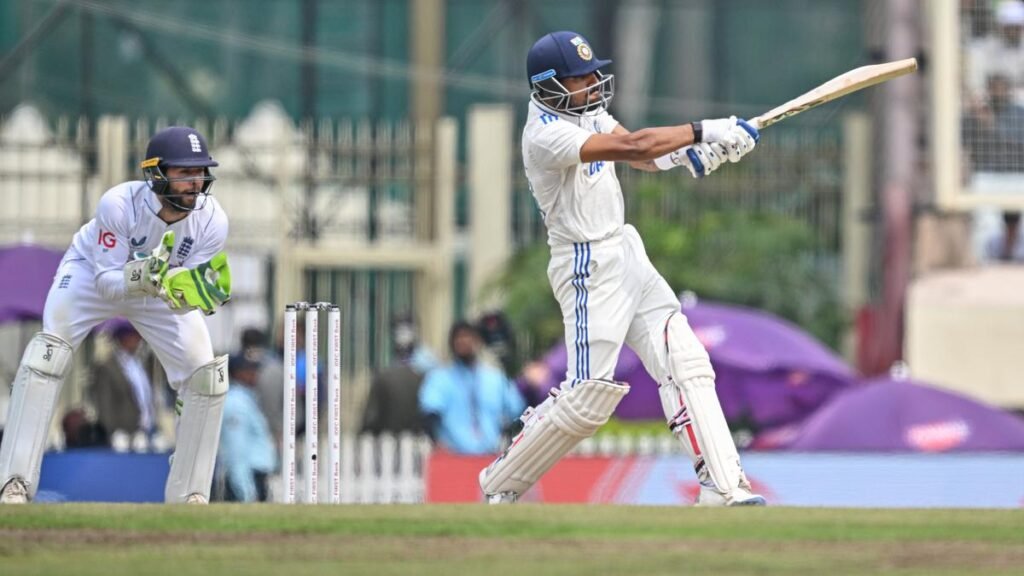In the latest cricketing showdown between India and England, Dhruv Jurel emerges as a shining star, reminiscent of the legendary VVS Laxman.
Despite his limited first-class experience, Jurel‘s 90-run innings in India’s first innings during the 4th Test not only narrowed the deficit to a mere 46 runs but also showcased his composure and adaptability on the pitch.

You can’t really blame Dhruv Jurel if this is his witty analysis of the five-day match. After just seven days at the top level, the 23-year-old from Agra—who wasn’t even on the selection radar three months ago—has become a household name.
Jurel made his Test series debut last week in Rajkot thanks to the choice to play KL Rahul as a specialist batter, Ishan Kishan’s withdrawal for personal reasons, and KS Bharat’s unremarkable start to the series.
Jurel proved the team management’s faith in him by dominating with a clean 46, electric athleticism, and astute situational awareness that led to Ben Duckett’s run-out. He demonstrated that even with his lack of first-class experience, he belonged in the intense pressure of Test cricket.
In the current Ranchi Test, the rock around which India mounted a stunning comeback on day three of yet another intriguing match, Jurel did no harm to his burgeoning reputation. At the beginning of the middle day, India was once more in the dark, just like on the moving day in Rajkot. Similar to Rajkot, they recovered incredibly well to gain the upper hand, primarily due to the enthusiasm and wit displayed by a young player in just his second Test match.
Yashasvi Jaiswal, Shubman Gill, and Sarfaraz Khan are three twenty-somethings who have shown us the way forward. Definitely add Jurel to that mixture.

Despite his advanced age and limited senior representative experience (having only participated in 49 games), Jurel made the initiative to get the hosts back in the game that had appeared to be out of their grasp.
Jurel’s tendency to identify length and commit himself fully to the front foot or go right back, which stemmed from delving into his domestic cricket database, stood him in wonderful stead during a truly brilliant ninety-nine, which was worth more than its impressive numerical magnitude, on a pitch where the lack of bounce was the biggest threat.
On day two, Jurel strode out nonchalantly, working furiously on the wad of gum in his lips. India were 161 for five, responding to England’s 353. He must have been anxious—who wouldn’t be?—but he didn’t display any signs of nervousness on the outside, unlike the swan, whose feet paddle madly beneath the surface while it seems serenely tranquil above it. After losing both Sarfaraz and R Ashwin in less than thirty minutes, India appeared destined to surrender a significant and unavoidable disadvantage at 177 for seven.
Jurel didn’t appear to agree. He started the rescue operation at Kuldeep Yadav’s firm by confronting top tormentor Shoaib Bashir and giving him a two-person spanking before deciding to grind it out. While Kuldeep dominated most of the attack, Jurel was self-assured enough to contribute to reducing England’s lead.
Following an unfortunate end to Kuldeep’s outstanding stonewalling, Jurel took over as the main man alongside Mohammed Siraj and Akash Deep, contributing most of the 54 runs that were sewn together by the final two wickets.
To bat with the tail requires compassion and sensitivity. Even the most talented people struggle with it. VVS Laxman was an expert at extracting as much as possible from the tailenders. That’s saying a lot since if Sunday is any indication, Jurel has absorbed the essence of the amazing Hyderabadi.

When Tom Hartley dismissed Jurel with a stunning stroke, he had India within 46 of England’s total after farming the strike and making the big hit when the chance presented itself. Jurel must have been frustrated that his squad did not get a well-deserved maiden Test century, but he would also have been happy that they were able to rescue the side from a situation where more experienced batsmen had given up.
Even in his time of fame, Jurel never lost sight of his origins. He raised his first Test fifty right away and saluted, probably in memory of his father, a Kargil war veteran. This young man is really something, don’t you think?
But Jurel’s day was only getting started. He was still going to have a hard time behind the sticks; the bounce would only get up to his ankles. Reaching well into his reserves of focus and strength, he retained wickets brilliantly, mimicking his batting exploits with his gentle hands and clever footwork.
A brilliant right-handed catch provided Ashwin with his fifth wicket and ended the England innings, providing the coup de grace. Because Anderson curved to reverse the off-spinner, the ball bounced off his pad, off the back of his bat, and toward slip, which is what made the catch exceptional. Jurel’s amazing take was smooth and unhurried. Simple as pie, huh?





